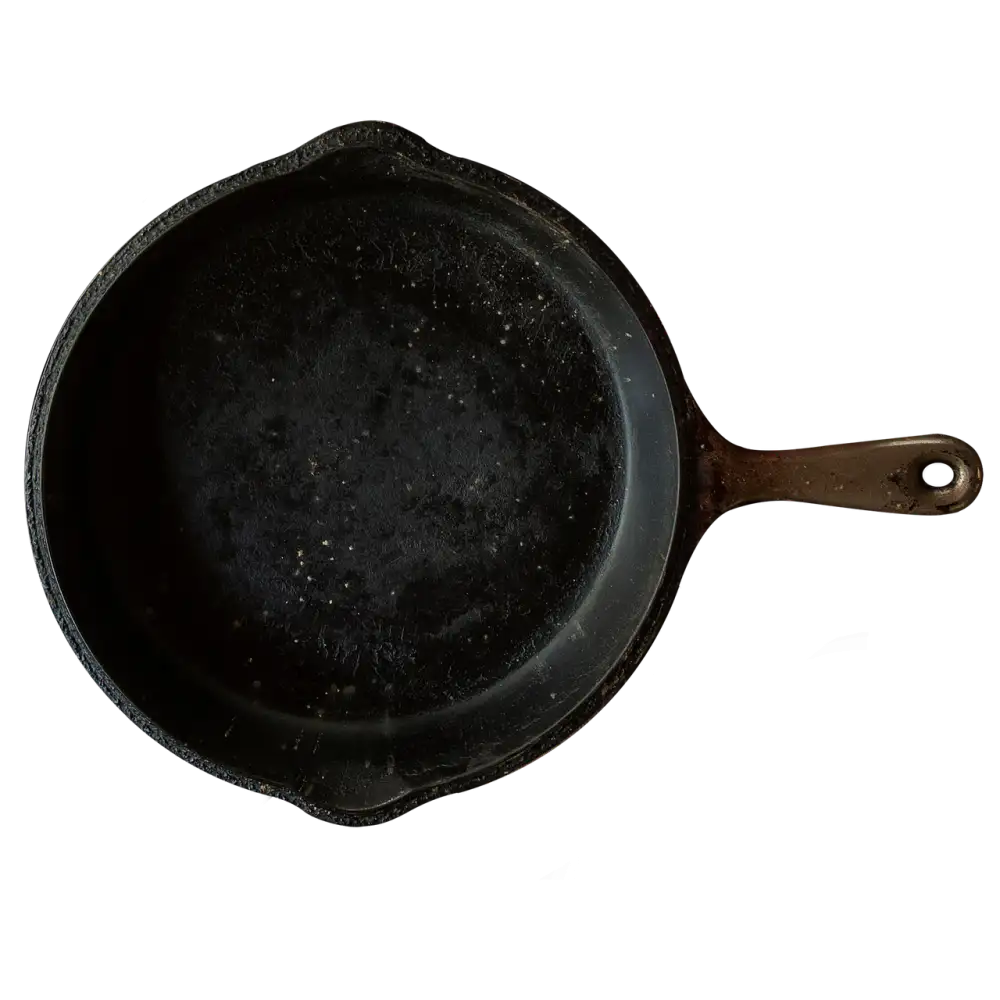Revive Your Cast Iron Skillet: Master the Art of Cleaning and Caring for a Spotless Kitchen Essential

A cast iron skillet is a kitchen essential that can last for generations if properly cared for. However, cleaning and maintaining it can be a bit intimidating for some. With the right techniques and tools, you can easily revive your cast iron skillet and keep it spotless. In this article, we will guide you through the process of cleaning and caring for your cast iron skillet, so you can enjoy its benefits for years to come. Let's dive in!
Gather necessary cleaning supplies
To effectively clean a cast iron skillet, it is important to gather the necessary cleaning supplies. Here are the items you will need:
1. Coarse salt or baking soda: These abrasive substances help to remove any stuck-on food particles without damaging the skillet's seasoning.
2. Soft sponge or brush: Choose a non-abrasive sponge or brush to avoid scratching the surface of the skillet.
3. Hot water: Use hot water to help loosen and remove stubborn residue.
4. Mild dish soap (optional): While some purists prefer not to use soap on their cast iron, a small amount of mild dish soap can be used if desired.
5. Paper towels or clean cloth: These will be used for drying the skillet after cleaning.
By having these cleaning supplies ready, you'll be well-prepared to tackle the task of restoring your cast iron skillet to its former glory.
Preparing the skillet for cleaning
Before you begin cleaning your cast iron skillet, it's important to prepare it properly. Start by removing any leftover food particles or residue from the skillet. You can use a stiff brush or a plastic scraper to gently scrape off any stuck-on bits.
Next, rinse the skillet with warm water to remove any loose debris. Avoid using soap at this stage, as it can strip away the skillet's seasoning. Instead, focus on using water and gentle scrubbing to clean the surface.
If there are stubborn stains or burnt-on food, you can create a paste using coarse salt and water. Apply the paste to the affected areas and use a cloth or sponge to scrub gently until the stains are lifted.
Once you've removed all visible dirt and grime, rinse the skillet again with warm water to ensure that all traces of salt or debris are gone. Thoroughly dry the skillet with a clean towel or paper towels.
Now that your cast iron skillet is prepared for cleaning, you're ready to move on to the next step: actually cleaning it!
Cleaning the cast iron skillet
Cleaning the cast iron skillet is a crucial step in maintaining its longevity and ensuring optimal cooking performance. Begin by rinsing the skillet with hot water, using a sponge or brush to remove any food residue. Avoid using soap, as it can strip away the skillet's seasoned coating. For stubborn stuck-on food, sprinkle coarse salt onto the skillet and scrub gently. Rinse thoroughly and inspect for any remaining debris. If needed, repeat the process until the skillet is clean. Pat dry with a clean towel to prevent rusting.
Drying and seasoning the skillet
Drying and seasoning the skillet is a crucial step in maintaining its longevity and preventing rust. After cleaning, use a clean cloth or paper towel to thoroughly dry the skillet. Make sure there is no moisture left on the surface as it can lead to rust formation.
Once dry, it's time to season the skillet. Seasoning involves applying a thin layer of oil to create a protective barrier on the surface. This helps prevent food from sticking and adds flavor to your dishes.
To season, heat the skillet over medium-low heat until it's warm. Then, apply a small amount of cooking oil or fat (such as vegetable oil or lard) to the entire surface, including the handle. Use a paper towel or brush to spread the oil evenly.
Continue heating the skillet for about 10 minutes, allowing the oil to penetrate and form a polymerized layer. This will give your skillet that desirable non-stick quality.
After seasoning, turn off the heat and let the skillet cool completely before storing or using again. The residual heat will help set the seasoning.
Remember, regular seasoning is essential for maintaining your cast iron skillet's performance. So, after each use, wipe it with a thin layer of oil before storing it away.
With proper drying and seasoning techniques, your cast iron skillet will not only stay spotless but also develop a beautiful patina that enhances its cooking capabilities.
Storing the cast iron skillet properly
Storing the cast iron skillet properly is essential to maintain its cleanliness and longevity. After cleaning and drying the skillet, make sure it is completely cool before storing it. Avoid stacking other cookware on top of the skillet, as this can cause scratches or damage to the seasoning. To prevent moisture buildup, place a paper towel or cloth inside the skillet to absorb any excess moisture. Store the skillet in a dry place with good air circulation, such as a cupboard or shelf. By following these storage guidelines, you can ensure that your cast iron skillet remains clean and ready for use whenever you need it.
Tips for maintaining a clean cast iron skillet
1. Avoid using soap: Soap can strip away the seasoning of your cast iron skillet. Instead, use hot water and a stiff brush to remove any food residue.
2. Dry thoroughly: After washing, dry the skillet completely to prevent rust. Place it on the stove over low heat until all moisture evaporates.
3. Apply a thin layer of oil: To maintain the seasoning, rub a thin layer of oil (such as vegetable or flaxseed oil) onto the surface of the skillet after each use.
4. Store properly: Store your cast iron skillet in a dry place to prevent moisture buildup and rust formation. You can place a paper towel inside to absorb any excess moisture.
5. Avoid acidic foods: Acidic foods like tomatoes or citrus can damage the seasoning of your skillet. If you need to cook such foods, it's best to use another type of cookware.
6. Use wooden or silicone utensils: Metal utensils can scratch the surface of your cast iron skillet, so opt for wooden or silicone utensils instead.
7. Re-season when necessary: Over time, the seasoning on your skillet may wear off. If you notice food sticking more frequently, it's time to re-season it by applying a new layer of oil and baking it in the oven.
By following these tips, you can ensure that your cast iron skillet remains clean and well-maintained, ready to enhance your cooking experience with its exceptional heat retention and flavor-enhancing properties.
By following these simple steps for cleaning and caring for your cast iron skillet, you can ensure that it remains in top condition for years to come. A clean skillet not only enhances the flavor of your food but also prevents any potential health risks associated with improper maintenance.
Remember to always gather the necessary cleaning supplies before starting the process. Preparing the skillet by removing any stuck-on food particles and gently scrubbing it with a brush will help loosen any residue. Cleaning the skillet with hot water and mild soap, if necessary, will eliminate any remaining dirt or grease.
After cleaning, make sure to thoroughly dry the skillet to prevent rusting. Seasoning the skillet with a thin layer of oil will create a protective barrier and enhance its non-stick properties. Properly storing your cast iron skillet in a dry place is essential to prevent moisture buildup and maintain its quality.
To maintain a clean cast iron skillet, avoid using harsh chemicals or abrasive materials during cleaning. Instead, opt for gentle methods like salt scrubbing or boiling water. Regularly seasoning your skillet will keep it well-protected and ready for use whenever you need it.
With proper care and maintenance, your cast iron skillet will continue to provide you with delicious meals and withstand the test of time. So go ahead, cook up a storm, and enjoy the symphony of flavors that only a well-maintained cast iron skillet can deliver!
Published: 25. 11. 2023
Category: Home



